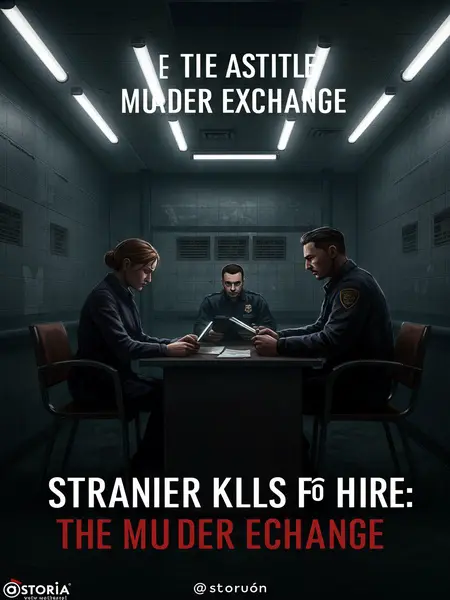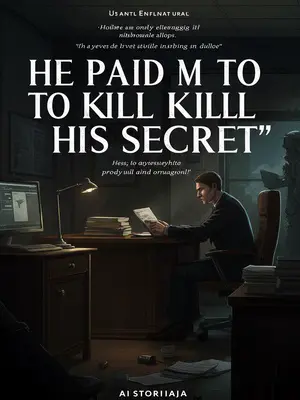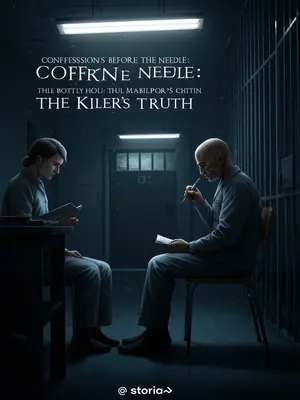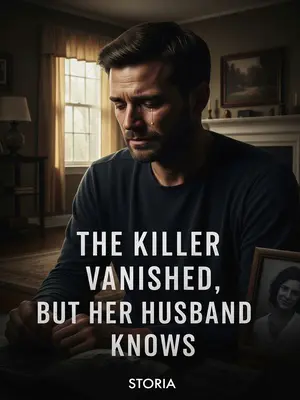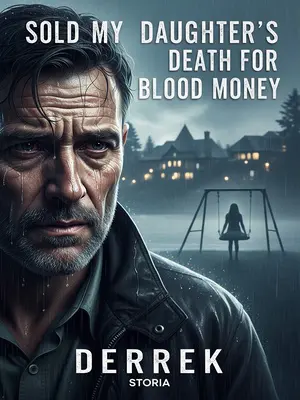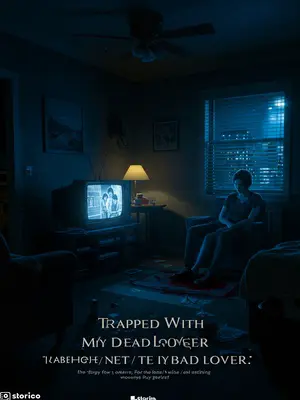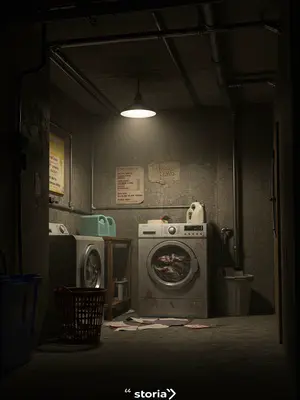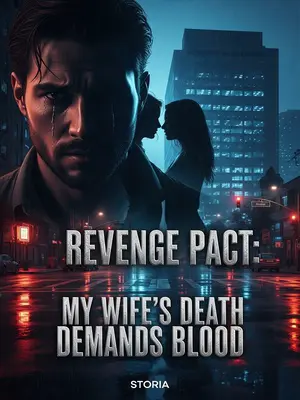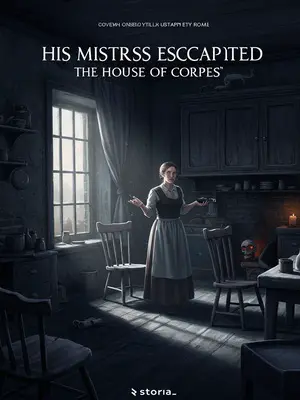Chapter 1: Perfect Crimes and Suburban Horrors
Anyone who’s ever tried to hide a body—even in their darkest imagination—knows the hardest part isn’t dumping the corpse. It’s erasing every thread that could tie you to the victim. Only then can you really bury your motive.
If you’ve watched enough late-night crime shows or lost sleep to true crime podcasts, you know it’s never the river, the woods, or the landfill that trips up a killer. It’s the tiniest thread—a text, a call, a neighbor’s nosy memory. That’s what yanks everything loose. You could bleach every surface and bury the body under a new highway, but if you don’t cut all ties, it’ll come back for you—like the L train rumbling back at 2 a.m., always on schedule.
In most murder cases, the reason is simple: money, jealousy, or payback. Cops usually figure out the killer fast by looking at who the victim knew and checking security cameras.
Usually, a quick check of bank records or a jealous ex’s Instagram DMs cracks the case. Most murderers are more obvious than they think. The city’s blanketed in cameras—every gas station, every corner store. You’re never really alone in Chicago, not even on a sleepy cul-de-sac like Willow Creek Estates.
Then there are the ones who do it for attention, to make headlines. And the hardest to crack: random killings.
There’s always that handful who want their name up in lights, even if it’s just as a headline—chasing infamy like it’s a prize. But the ones that make your skin crawl? The randoms. The ones who just… do it. No reason, no warning. That’s what keeps detectives up at night, staring at the ceiling fan, wondering if they missed something.
But in 2017, I saw a sixth kind. The killer’s methods were rough, but it was the closest thing to a perfect crime I’ve ever come across.
I’m not saying I’ve seen it all—no one in this line of work has. But this one? It rattled the old guard in the squadroom. Even the gray-haired vets who’d worked the South Side in the ‘80s said so. Something about it stuck with you, like the taste of cheap whiskey you can’t shake.
When I heard about it, I made sure to jot down every detail of this bizarre story. If you’re into true crime or detective work, come along and see if you can solve it from the start.
If you’re the type who stays up reading case files or arguing with Reddit sleuths about the Zodiac, buckle up. I took notes so detailed, you’d swear I was prepping for a cross-examination. Let’s see if you can outsmart the perp before I did.
I’m a homicide detective.
Detective Mike Lawson, badge 3172. Fifteen years on the force, and until that fall, I thought I’d seen every way a person could be cruel. Turns out I was wrong.
On September 14, 2017, there was a family massacre in Willow Creek Estates, a quiet suburb outside Chicago.
Willow Creek is the kind of neighborhood where folks hang seasonal flags on their porches and keep their lawns mowed to HOA standards. Kids ride bikes until dusk, neighbors compete over Halloween decorations, and everyone nods when you drive past. Nothing ever really happens there—until it did.
David Harper, director of St. Mary’s Hospital, his wife, and his son were brutally murdered in their home.
David was one of those local legends—ran every charity 5K, wore goofy holiday sweaters to the hospital Christmas party. He was the guy you called if you needed a favor, the guy who slipped you a Starbucks gift card if he thought you looked tired. His family fit right in with the neighbors: Susan was always organizing bake sales for the PTA, and Adam, their son, mowed half the block’s lawns for extra cash.
At ten that morning, David Harper was supposed to perform a major surgery, but he was late and wouldn’t pick up his phone. Some doctors from the hospital drove over to check on him, only to find blood everywhere and the three heads set on the dining room table. The first doctor through the door staggered back, knuckles white on his phone. You could hear his retching from the porch. The neighbors called 911.
You don’t forget a 911 call like that. The dispatcher’s voice cracked when she relayed the scene: “Three decapitations. Multiple bodies. Blood everywhere.” You could hear the panic ripple through the police radio waves. Paramedics rolled up, but even the seasoned ones hesitated before stepping inside.
After the call, police, detectives, and the forensics team rushed over.
Squad cars clogged the leafy street, blue lights painting the white picket fences. Crime scene tape went up fast, and neighbors peered from behind curtains, whispering into their cell phones. The forensics team—gloved up and dead-eyed—filed in behind us, snapping photos and collecting every scrap. The coppery tang of blood hit us before we even crossed the threshold, mixing with the faint scent of lemon cleaner.
The coroner said the victims died sometime between 10 p.m. on the 13th and 2 a.m. on the 14th, with the bodies being cut up after death.
It was a muggy night, the kind where the air sticks to your skin. The ME told us there were no defensive wounds—whoever did this, the Harpers never saw coming. The time window was tight, but not impossible. The killer had hours to work, and he used every minute.
David Harper was forty-eight. His wife, Susan, forty-two, worked at a local bank. Their son, Adam, fifteen, was a sophomore at the nearby high school.
All-American family—annual Christmas card photo on the fridge, a rescue dog, even a minivan in the driveway. Susan was the type to host book clubs; Adam played JV soccer. Nothing in their history raised a red flag. Looking at their fridge covered in honor roll certificates and family vacation magnets, I felt the weight settle in my chest. This wasn’t supposed to happen to families like the Harpers.
The killer used a knife to sever all three heads, lined them up on the table, then dismembered the bodies in the living room, chopped them up, and took the pieces away.
The brutality was theatrical. Whoever did this wanted to send a message—maybe to the family, maybe to the world. The forensics lead, Rodriguez, swore he’d never seen anything like it in his twenty years.
From the scene, it was clear the killer had gotten inside ahead of time. After David and Susan came home, the killer murdered them one after the other in the study and kitchen. Adam came home last and was the final victim.
The way the house was staged, it was almost like the killer knew their routines: who’d come home first, who’d turn off the porch light, who’d lock the back door. The TV was still on in the living room—one of those late-night talk shows—like someone had just left for a second.
Investigators searched everywhere but found nothing: no fingerprints, no shoe prints, not even a single hair.
The place was wiped down with a precision that made you think of professional cleaners or someone with a military background. Even the drains sparkled—Clorox and hot water, maybe, or just a killer who’d watched a lot of CSI.
We checked all the neighborhood security cameras, but found nothing suspicious—no strange cars, no odd people, nothing.
We rewatched footage from every traffic cam, Ring doorbell, and baby monitor for blocks. Not a blip. No delivery trucks, no rideshares, nothing that didn’t belong. Whoever did this either lived nearby or understood how to disappear in plain sight.
By noon, officers found pieces of the victims’ flesh at a trash transfer station about a mile away. Most had already been chewed by stray dogs, leaving only a little behind.
The dump was pure chaos: the city’s underbelly in one sprawling, reeking pit. The remains were scattered, unrecognizable—half of it already dog food. One rookie lost his lunch and had to sit out the rest of the shift. It was a horror show.
The homicide team called an emergency meeting to try to figure out the killer’s motive and identity.
We huddled in the cramped conference room, empty coffee cups piling up, whiteboard covered in scribbled theories. Someone muttered, “This doesn’t feel like a robbery.” Nobody argued. Nobody wanted to be the first to say they were stumped.
First, all the valuables in the house were missing. At first, it looked like a robbery gone wrong. The fact that the killer avoided all the cameras suggested he was either local or even someone the family knew.
Jewelry boxes emptied, safe cracked, Susan’s engagement ring missing. That’s classic smash-and-grab. But the surgical way the killer moved? That screamed something deeper. Maybe the thief knew where to look—or knew the Harpers personally.
Second, the bodies were cut up after death. If it was just about money, there’d be no need to go that far—it would only risk leaving more evidence and make the investigation move faster. So, maybe the killer had a grudge; revenge was probably the main motive, with theft as a bonus.
The postmortem mutilation was overkill—literally. If all the killer wanted was cash, he’d have been out in five minutes. But this took hours. Rage, humiliation, or maybe a warning to someone else. Nobody in the squad bought the robbery theory, not really.
Third, based on the depth of the wounds and the blood spatter, we figured the killer was a man, about 5’8” to 5’11”, 145 to 175 pounds.
The ME’s report was clear: strong, right-handed, efficient. No hesitation in the cuts. Someone who didn’t shy away from blood—or had done something like this before. The profile fit half of Chicagoland, but it was a start.
The chief put me and my partner, Lisa Grant, in charge. This was the worst crime our city had seen in years—the killer was ruthless and could strike again. We had to catch him, fast.
Lisa’s been my partner for six years—sharp, fearless, with a coffee addiction that rivals mine. She grew up on the South Side and doesn’t flinch at anything. The chief trusted us because we’d cracked the Cermak triple homicide the year before. This case, though, was different. The whole department felt it.
Lisa and I split into two teams. She looked into the family’s relatives and friends; I started with David Harper’s coworkers at the hospital.
We divided and conquered. Lisa started dialing every Harper cousin and Facebook friend, while I dug through the hospital staff records, hunting for anyone with a grudge or a reason to hate the Harpers. The pressure was on—every news outlet in Chicago was breathing down our necks.
